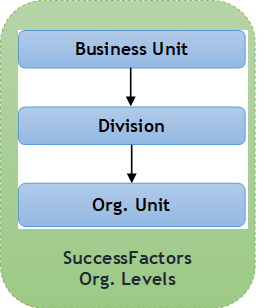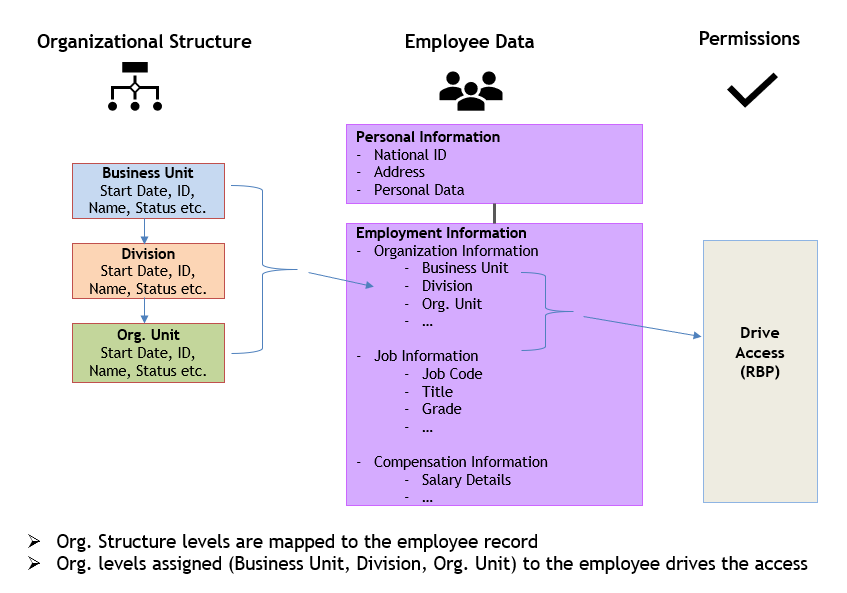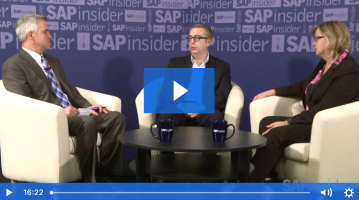Lessons Learned by Lam Research After an Employee Central Org. Structure Redesign
by Brianna Shipley, Senior Editor and AJ Whalen, Vice President & Publisher, SAPinsider
Organizational structures in SAP SuccessFactors Employee Central can differ from the structures used in on-premise SAP ERP HCM systems in terms of both configuration and granularity. Because of the differences, customers who are unable to thoroughly assess their organizational structure requirements, business processes, and governance during their move from on-premise HCM to Employee Central will not be able to fully utilize SuccessFactors’ org. structure capabilities.
When Lam Research – a producer of wafer fabrication equipment and services for the semiconductor industry – migrated from on-premise to Employee Central in 2015, much of the organizational structure and related data from its SAP HCM instance were moved across to the new platform during the implementation. This meant that the organizational structure followed the manager relationship hierarchy and couldn’t fully support the company’s current global accountability structure need. To achieve the highest data integrity, a robust governance process needed to be put in place. This fact, combined with the differences in org. structures between the two systems, made it difficult to meet certain reporting needs and impacted the quality of Lam’s HR analytics. It also prevented them from using advanced functionalities released by SAP SuccessFactors.
Over a period of time, as the org. structure shortcomings became apparent, the team at Lam set out to restructure its organizational hierarchy levels in Employee Central to achieve the following results:
- Deliver analytic views by global accountability using org. structure in SAP SuccessFactors in addition to the existing reporting relationship views
- Improve efficiency by taking advantage of automated role-based permissions
- Strengthen data integrity and reduce effort spent on audits
- Effectively manage re-organizations within the company
Opportunities for Optimization
As a best practice, organizational structures in Employee Central typically do not require each manager to have his or her own organization unit, as was the case with SAP ERP HCM. However, when someone became a manager at Lam Research, he or she would request creation of a new organizational unit – a practice that was followed with SAP ERP HCM – rather than being assigned to an existing unit in the structure. This created redundant data and led to an inaccurate representation of the actual structure and far more organizational units within Employee Central than what existed in the company.
Several years after go-live, the team at Lam set out to re-configure and standardize its organizational structures in Employee Central, to optimize its usage, and leverage the capabilities of SAP SuccessFactors. In the new design, Lam defined the three hierarchy levels provided by Employee Central as business unit (top), division (falls under business unit), and organizational unit (falls under division unit), as shown in Figure 1. Selection of values at each level would show a filtered list for selection at the next level.

Figure 1 – Organizational structure hierarchy in Employee Central
“When redesigning the org. structure, we had to ensure there was minimum disruption,” says Shripal Jain, Program Manager at Lam Research Corporation. Jain and his team at Lam possessed the necessary skills and resources to conduct the redesign in-house, a benefit that helped them more closely manage cost and effort of the project.
Once configuration of the new org. structure levels was complete, Lam had to map the three levels to all the employees’ record. This was an essential step of the redesign process because the levels are tied to who pays for each employee’s cost, role, and responsibilities. Lam took advantage of Employee Central’s customization capabilities to align the levels to the company’s cost structure. Org. levels assigned to the employee would then also drive automation of role-based access.
Taking Advantage of Role-Based Permissions
Prior to the redesign, roles and authorizations were mostly assigned manually when changes in position or organizational assignment occurred. “When you do things manually, it is difficult to manage and scale,” says Jain.
Since the organizational structure redesign, Lam has been able to successfully leverage role-based permissions (RBP) based on organizational level assignments. Once the organizational structure levels are mapped to the employee record in the new design, the employee’s organizational levels determine the roles and permissions to which he or she is assigned, as shown in Figure 2. Lam uses dynamic assignment to automate 80-90% of the access management. This saves time and increases efficiency as assigning permissions is mostly automated.

Figure 2 – At Lam Research organizational structure levels are mapped to the employee record within Employee Central
A Robust Governance Process Streamlines Change Management
Naturally, an organizational structure redesign has many downstream impacts to HCM business processes, including workflows, role and permission assignments, and reporting. Employee data conversion was a significant task because all employees and positions had to be mapped to the new organization levels. Additionally, interfaces and applications that require the org. structure information contained in SAP SuccessFactors, as well as those that send data to and from SAP SuccessFactors, needed to be updated.
Like many projects, one of the biggest non-configuration efforts was related to change management. Jain and the team at Lam had to ensure that training and communication were provided to the various stakeholders who used SAP SuccessFactors. To navigate these impacts, the organization created additional documentation, tools, and resources.
“Prior to the implementation we faced some challenges around accurately maintaining the organizational levels assigned to an employee. So, following the redesign, we created a robust governance process to allow for certain checks and balances, says Jain. “The creation of a business unit, for example, has the highest level of checks and balances compared to a division or an organization unit, because a business unit drives more processes overall.”
Now, to create any unit, the requestor is required to follow a consistent approval process using a standard template. The company also has a process and guidelines in place for creating mass changes (updating levels for multiple employees by system administrator, for example) as well as up-to-date user guides that provide step-by-step instructions for making updates to positions and employee data within Employee Central. The new approval flows, documentation, and resources ensure the integrity of the new organizational structure and accuracy in reporting and accountability views.
What This Means for SAPinsiders
Jain says that buy-in from leadership is very important when implementing a project such as the one Lam underwent. “If you don’t have the right skills and the buy-in from leadership, your project will likely not take off because it involves decisions around how the company wants to view its structure, what are the reporting requirements, and which groups will be impacted,” said Jain.
Lam’s redesign led to greater global accountability, data integrity at the organization structure level, increased efficiency across multiple groups, automation of RBP, and a reduction in risk. Based on Lam’s experiences, here are some key takeaways for customers who are considering redesigning their organizational structure and hope to experience similar results:
- Be clear on the WHAT and WHY of the redesign requirements. In addition to obtaining buy-in from leadership, any company contemplating a structure redesign must understand its current system’s capabilities and limitations first. “Don’t run before walking and be sure you are all speaking the same language before you begin,” says Jain, emphasizing the need to carefully review the planned redesign and to align it with your current data and processes. You should be sure to account for interdependencies between your structure changes and other processes such as roles and permissions, interfaces, and reporting.
- Choose an implementation lead to orchestrate the project and get the right groups and individuals involved from an early stage. Then, make use of all the tools and support services that are available (i.e., mission critical team, handbooks, knowledgebases, etc.).
- Don’t underestimate data conversion efforts. Data conversion is a huge task and involves updating all the employee records. You will need to account for many different scenarios to cover all the updates. You will need to prepare contingency plans and backup procedures, as well as create resources such as help guides, job aids, and training tools to help navigate such a large project.
- Carefully consider your go-live and the effective date of the changes. The timing and date of your changes can greatly impact year-end activities, reporting, and analytics. You should allow adequate time for change management and testing and plan your cutover activities and tasks meticulously well in advance of the event.
Following this strategic guidance and the experiences of the team at Lam Research should help SAP SuccessFactors customers streamline organizational structures and improve data integrity and accuracy across Employee Central.








